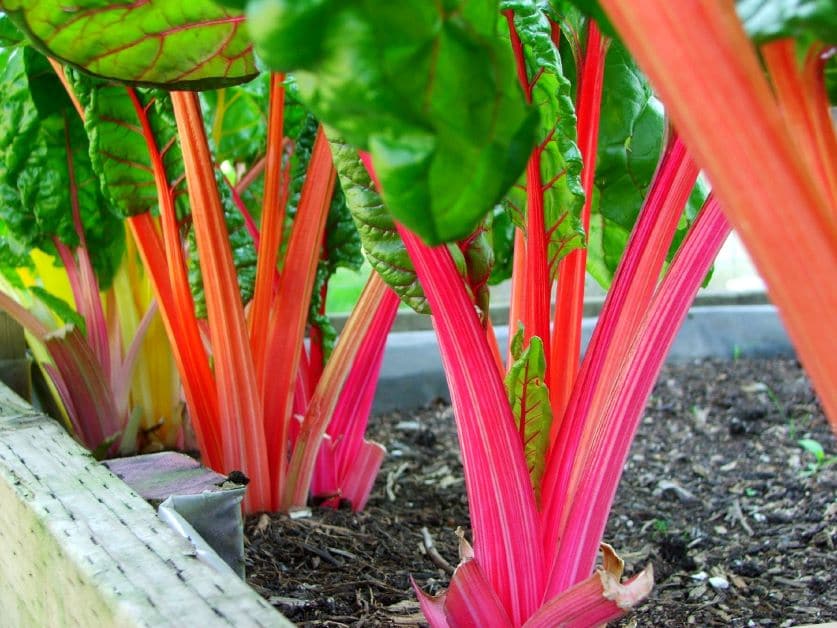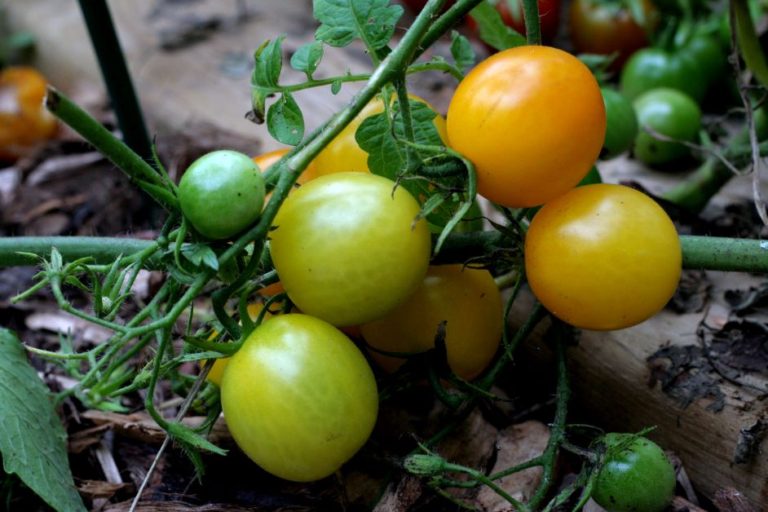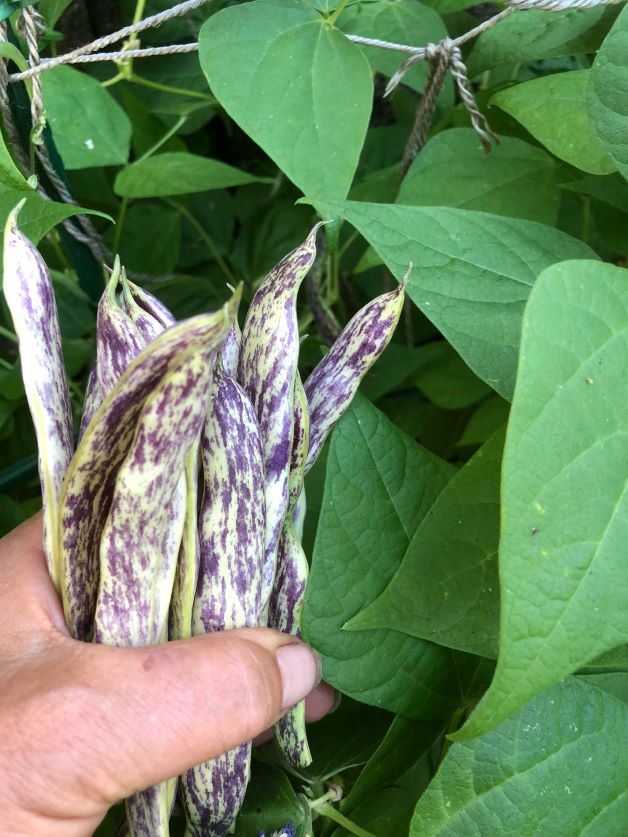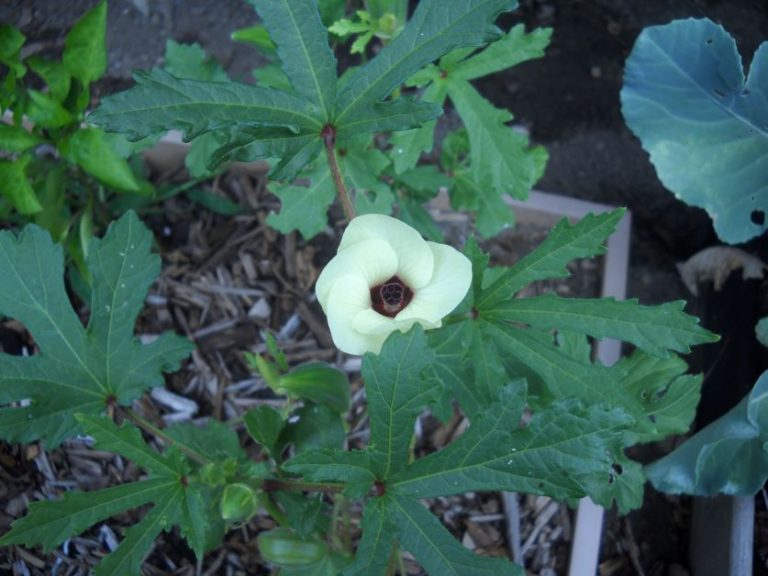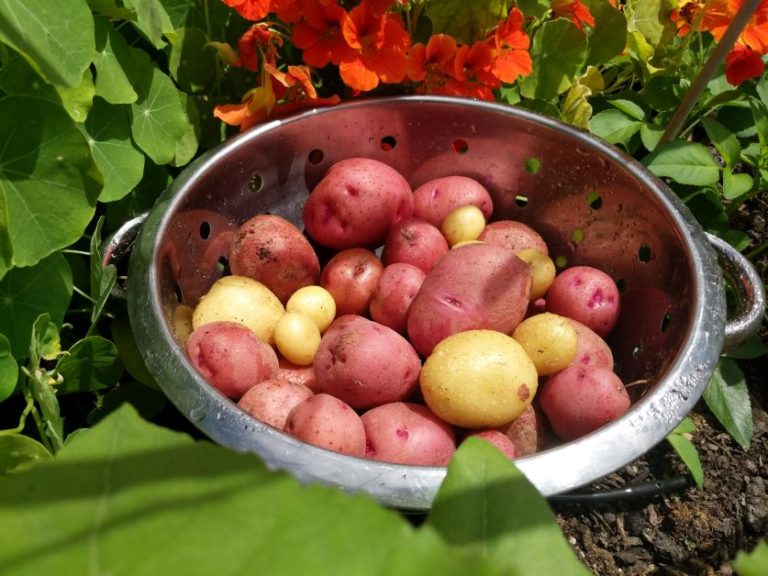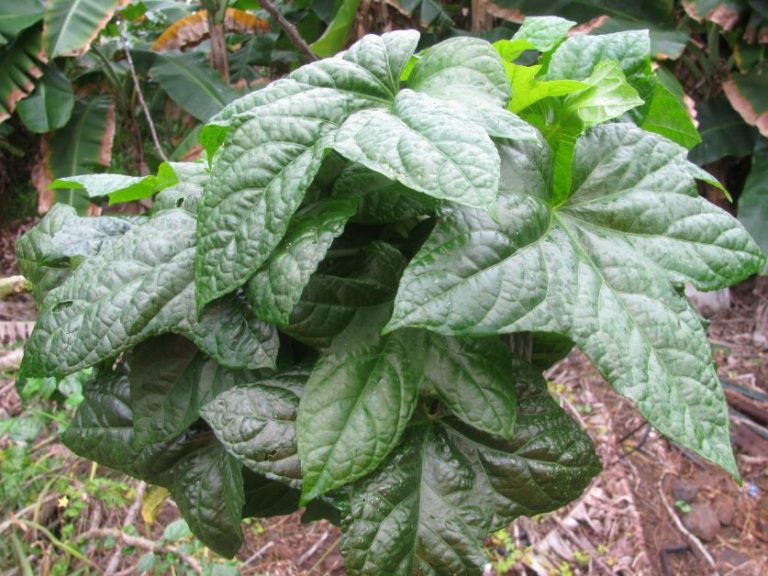18 Best Heat-Tolerant Greens
Last Updated: 06/08/2022
Growing greens doesn’t always go as planned when you’re gardening in Florida. Lettuce is a cool-weather crop and our heat and humidity forces lettuce to bolt and turn bitter.
You can try to grow lettuce during the coldest part of the year, but even then you may not have much luck…I’m writing this article on October 20th and it’s 85F. It’s gonna be a while before I’d describe the weather as crisp.
The trick to a successful summer garden is to work with the climate instead of against it. Skip the romaine and green leaf and instead focus your efforts on heat-tolerant greens.
Here’s a list of 18 heat-tolerant greens that can grow for most of the year in the tropics and all summer long just about everywhere else.
Bok Choy (Brassica rapa subsp. chinensis)
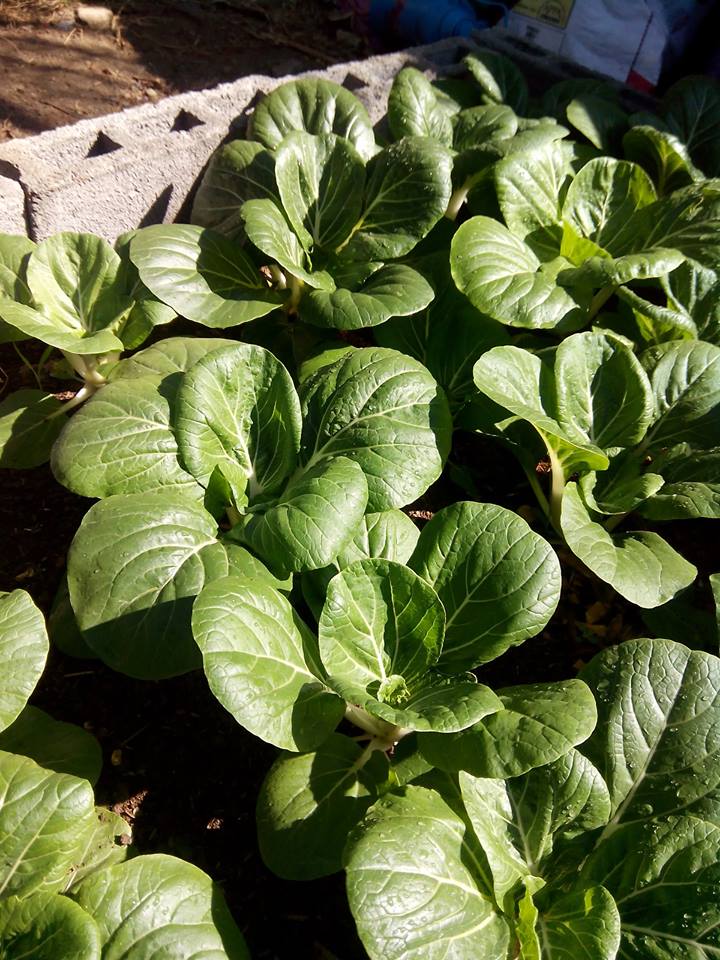
Bok choy is my favorite green to grow because of its versatility. You can chop it up and throw it into a stir fry, simmer it in a soup, or you can eat it raw in a salad or as a wrap. It has a mild flavor, and the stalk reminds me of celery.
Bok choy does bolt when it gets very hot, but it doesn’t bolt as fast as lettuce. When it does bolt, I don’t mind. Bees love bok choy flowers and I end up getting tons of volunteer bok choy plants in my beds every year from fallen seeds.
Egyptian Spinach (Corchorus olitorius)
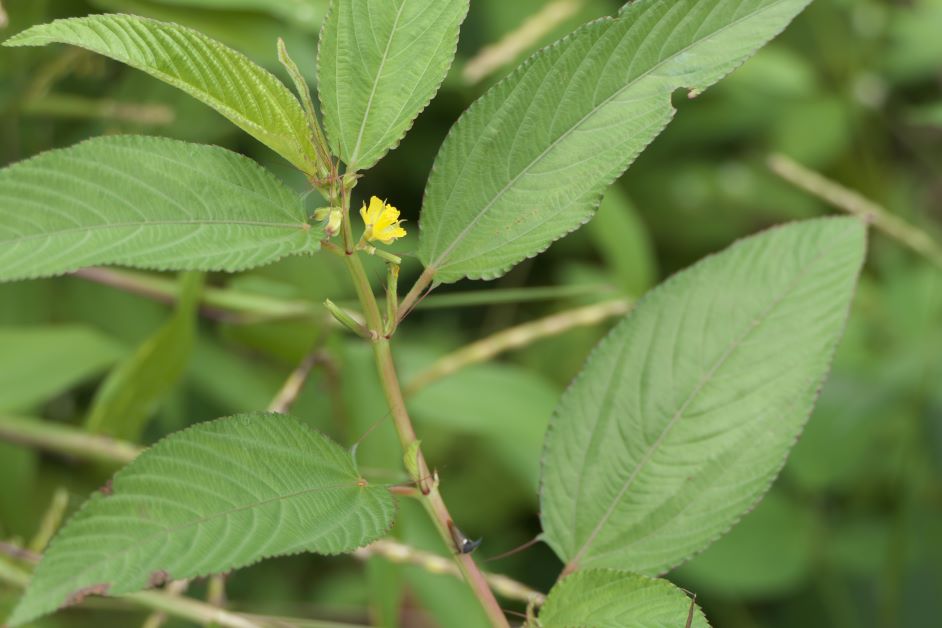
Just like bok choy, Egyptian spinach will eventually bolt but it doesn’t happen overnight. When it does bolt and the flowers are pollinated, they turn into an edible pod that tastes a lot like okra. The leaves don’t get bitter when the plant bolts, either.
Also known as molokhia, this green grows as a tall, shrub-like plant. It’s a staple ingredient in many Middle Eastern dishes and is delicious raw in salads, as well. For more information, check out my article all about how to grow Egyptian spinach.
Dinosaur Kale (Brassica oleracea var. palmifolia)
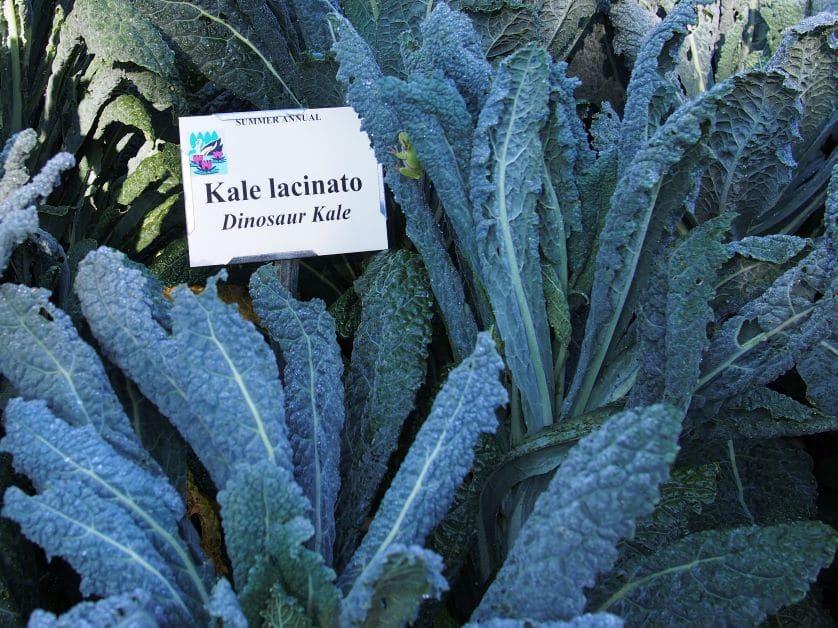
This hearty green is popular in Italian cooking and is perfect for soups and stews. It’s easy to grow in the heat – I’ve had stalks of dinosaur kale grow almost the entire year before they finally succumbed to disease (I’m blaming old age).
Some people grow dinosaur kale as an ornamental edible. It is uniquely dark greenish-blue and can make a pretty border plant.
Sweet Potato (Ipomoea batatas)
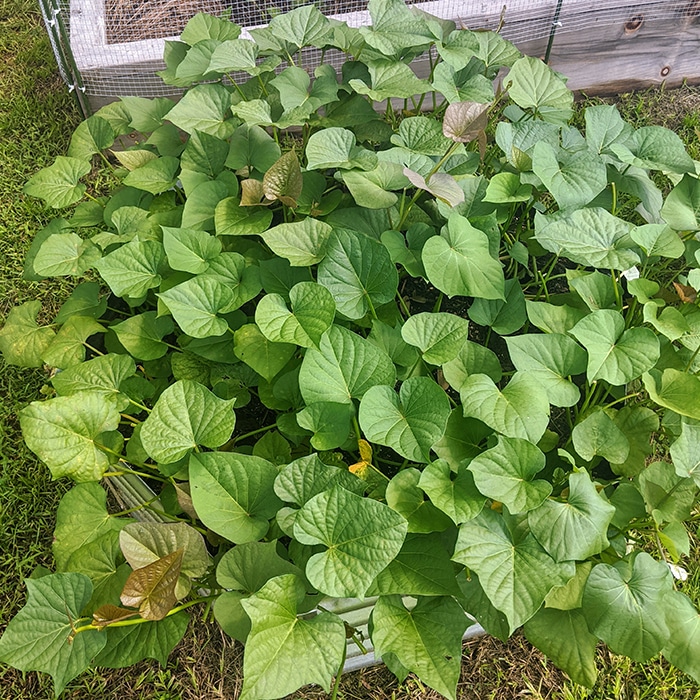
You might be asking yourself why sweet potatoes are on a list of heat-tolerant greens, but let me tell you – sweet potato greens are amazing. I’ve met people who grow sweet potatoes strictly for their leafy greens and skip eating the potato part altogether.
It takes about 5 months for the root to mature into an actual sweet potato. While the potatoes are forming, harvest the leaves and use them like you would baby spinach.
If you live in the subtropics, you don’t want to skip growing sweet potatoes. I’ve written a guide on how to grow sweet potatoes in Florida — check it out for everything you need to know!
Collards (Brassica olaracea, acephala group)
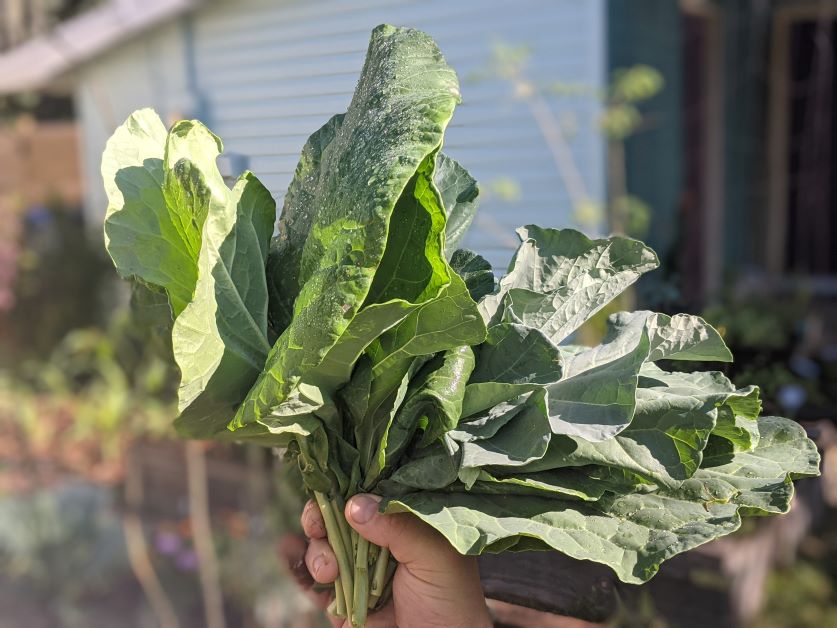
This easy-growing southern staple will grow in Florida almost year-round. They’re also biennial, which means they only bolt in their 2nd season.
I grow my collards in a raised bed, and they do well in containers as long as the pot is big enough (at least 5 gallons). These are generous cut-and-come-again producers and just 2 or 3 plants will feed your family all year.
Read my collard green cheatsheet and add this one to your garden this year.
Longevity Spinach (Gynura procumbens)
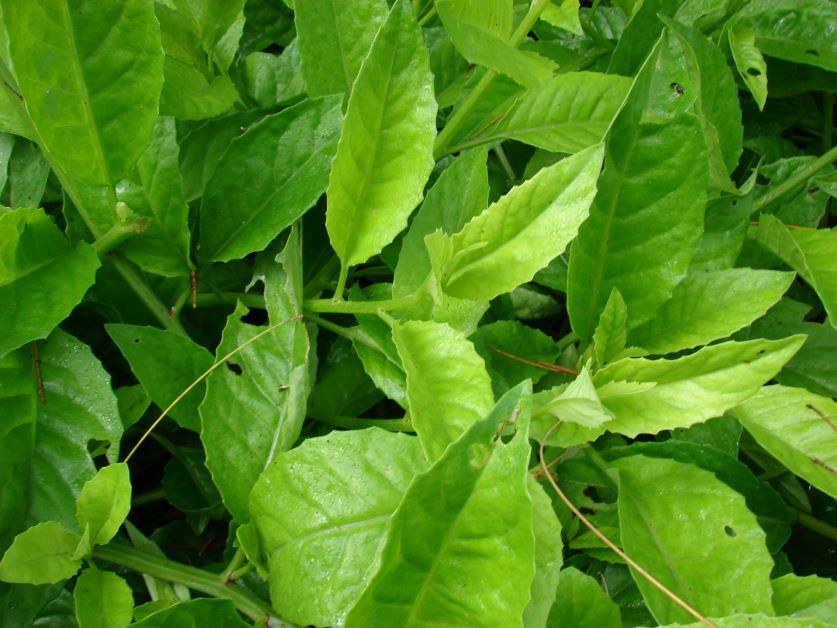
Known for its many health benefits, longevity spinach is a must in the subtropical garden. It’s low maintenance, looks pretty, and thrives on neglect.
Studies show that longevity spinach can help regulate blood sugar and lower cholesterol. You can eat it raw or cooked.
Longevity spinach seeds can be hard to find; your best bet is to buy a cutting.
Chaya (Cnidoscolus aconitifolius)
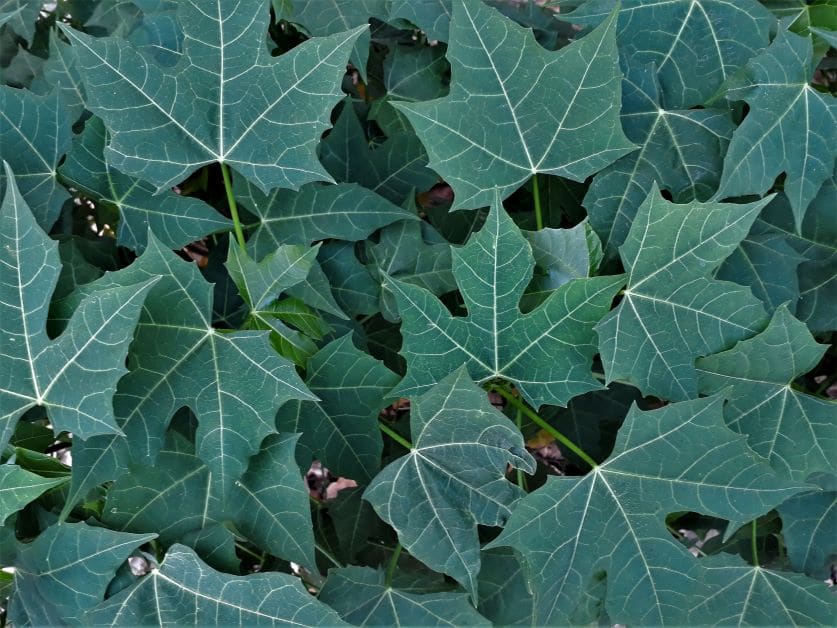
Chaya, or tree spinach, is a staple crop in Mexico and Central America. Florida’s climate is perfect for chaya, but some people are scared to grow it because the leaves contain cyanide.
Yes, you heard me right. Cyanide. All that really means though is that you can’t eat chaya raw. You can’t eat chicken raw either, so no big deal, right? Cook chaya for 20 minutes in a non-aluminum pot and it’s perfectly safe and delicious.
Chaya is a bit rare in the U.S. and is another variety that you’ll have to buy as a cutting.
Moringa (Moringa oleifera)

Moringa is called the “miracle tree,” and for good reason. The entire plant is edible, and its nutritional benefits are off the charts. Moringa has more protein than yogurt, more vitamin C than oranges, more fiber than oats, more calcium than milk…the list goes on and on.
Moringa is a little bit spicy, sort of like horseradish. Throw the leaves into a salad, toss some into a smoothie or soup, or dry them to make tea or homemade supplements.
To learn more about this superfood, check out my moringa growing guide.
Sissoo Spinach (Alternanthera sissoo)
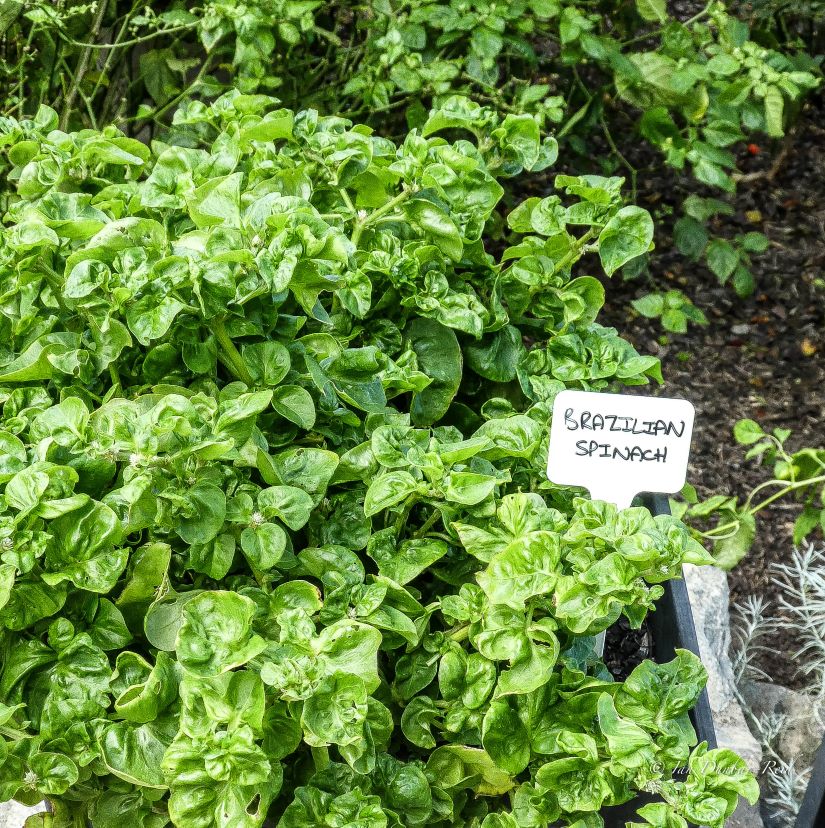
Sissoo spinach is also called Miami spinach or Brazilian spinach, so it’s clear that this plant does well in Florida. This low-lying, spreading green also makes for an attractive groundcover when planted in the shade.
I’ve written an article all about sissoo spinach including how to plant it, where to find it, and how to eat it. This is one of my favorite heat-tolerant greens and I think it’ll be one of yours, too.
Katuk (Sauropus androgynus)
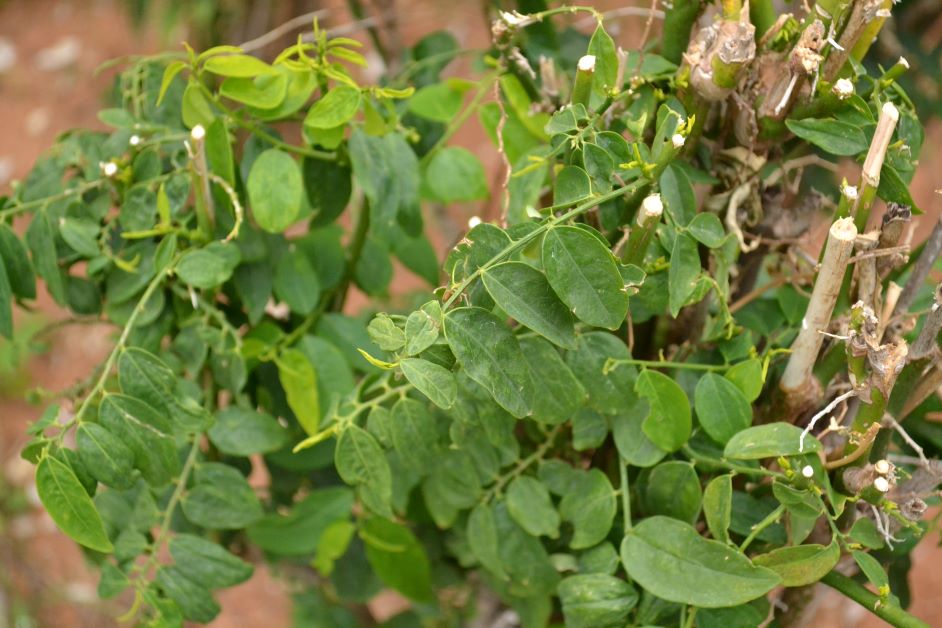
Native to Southeast Asia, katuk is an easy-growing hot weather perennial.
Katuk tastes a lot like peas and the new shoots taste like asparagus. It even produces edible berries! As a bonus, it’s naturally pest and disease-resistant. Katuk is a must in the Florida summer garden.
To learn how to grow katuk, check out my step-by-step growing guide.
Edible Leaf Hibiscus (Abelmoschus manihot)
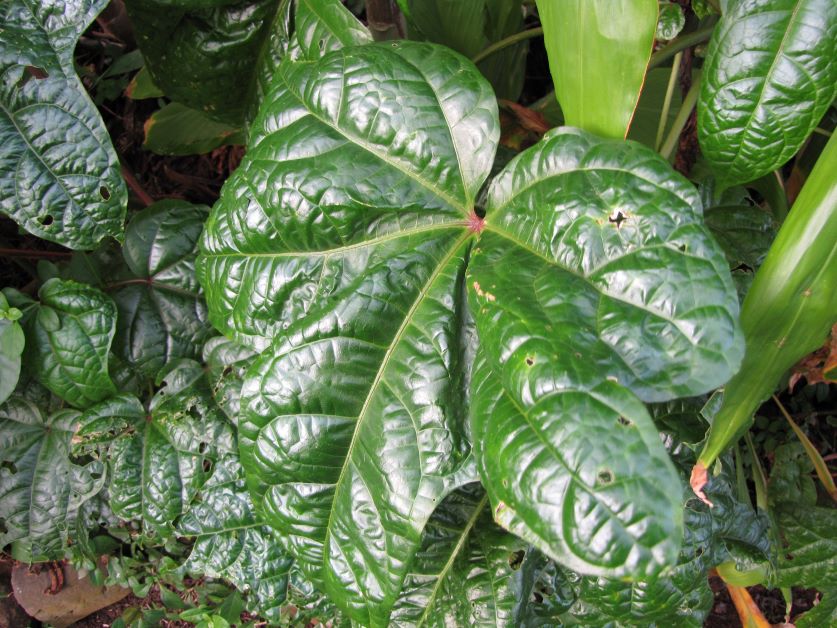
Edible leaf hibiscus, also called manihot, is a perennial that needs very little attention. In the right conditions, this plant can grow up to 12 feet tall – that’s a lot of food.
The leaves and flowers are edible raw or cooked. Edible leaf hibiscus can be an acquired taste because it’s a bit mucilaginous (slimy). Since it grows so easily in the subtropics, though, it’s worth giving a try.
Cranberry Hibiscus (Hibiscus acetosella)
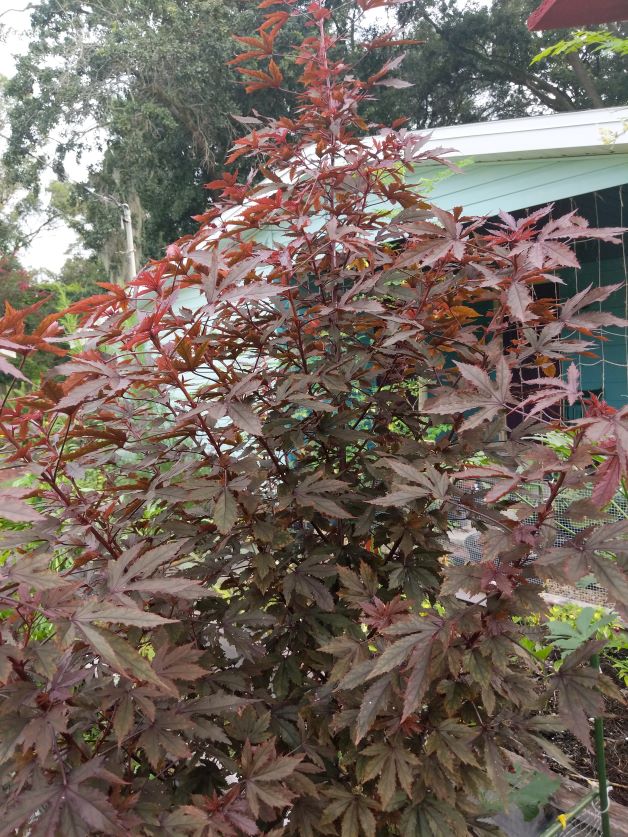
Cranberry hibiscus is a large shrub that pulls double duty – it’s as beautiful as it is delicious. A lot of people grow this plant as an ornamental and have no idea that it’s good to eat, too. Cranberry hibiscus grows like a weed in Florida and needs zero attention.
Cranberry hibiscus leaves are tart and are great for adding color to salads. It blooms in late fall. After pollination, the deep burgundy blooms turn into a pod-like growth called a calyx. You can dry the calyx and brew it into sorrel, a popular Jamaican drink.
Swiss Chard (Beta vulgaris)
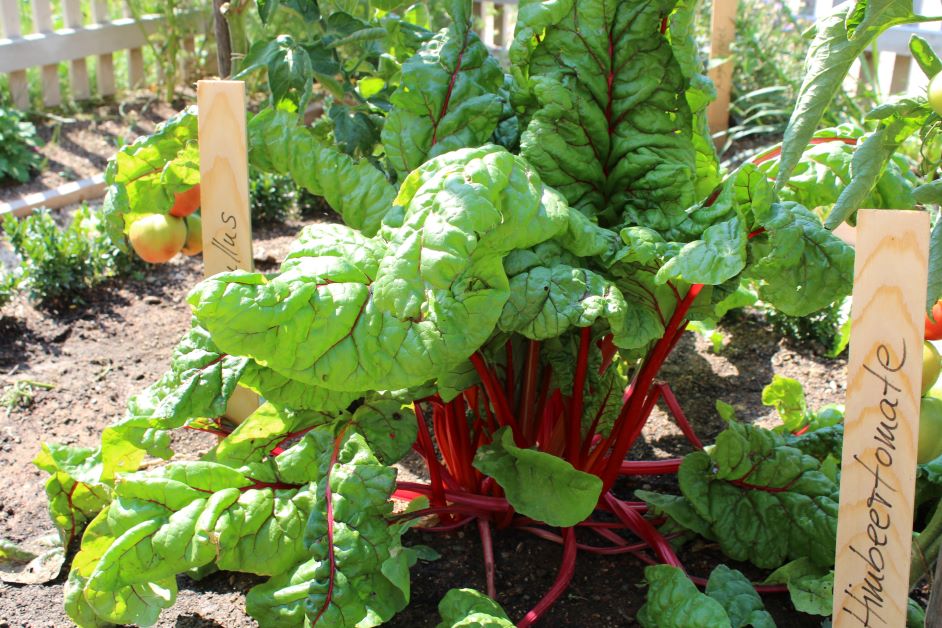
I love to grow chard as a celery substitute. Celery is a cool-weather vegetable that just doesn’t grow well in the subtropics. Instead of struggling with celery, I grow chard. The Swiss chard stem is a lot like celery in taste and texture. Swiss chard leaves are tasty, too. They are almost sweet and taste a lot like beets (which makes sense since they’re in the same family).
Chard is hearty – it’s one of the best heat-tolerant greens that also grow in cold. Swiss chard does grow slower in the summer, but it still does much better than traditional lettuce.
Amaranth (Amaranthus)

Also called pigweed, amaranth is an ancient grain and a food source around the world. There are about 75 different species of amaranth, each with its own unique characteristics. Amaranthus edulis, for example, is grown for grain. Amaranthus gangeticus, on the other hand, is usually grown for its spinach-like leaves.
Amaranth is one in a handful of crops that really flourish during Florida’s brutal summers. In fact, Florida has 15 native amaranth species. This is a good plant to grow when a lot of other stuff won’t, and it’s a good conversation piece, too.
Ethiopian Kale (Brassica carinata)
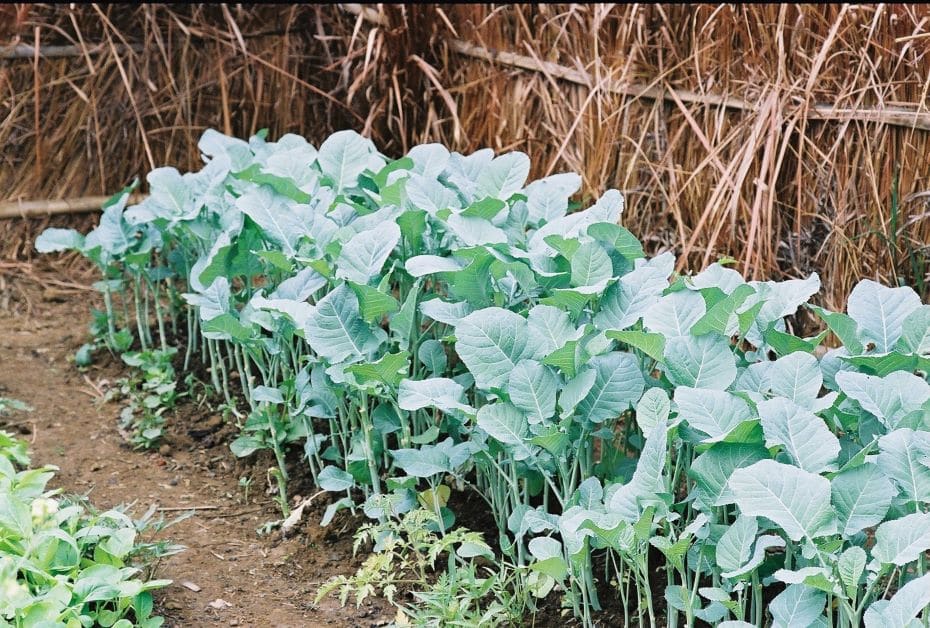
Kale in general is pretty hearty against the elements, and Ethiopian kale is one of the heartiest of them all.
Ethiopian kale is a cousin to mustard and produces thousands of seeds. If you add this heat-tolerant green to your plot, don’t be surprised if you see it pop up in random parts of your garden. They’re pest and disease resistant and don’t take much attention. They can bolt quicker than other types of greens, but pollinators love their flowers. To me, that’s worth it.
Ceylon Spinach (Talinum fruticosum)
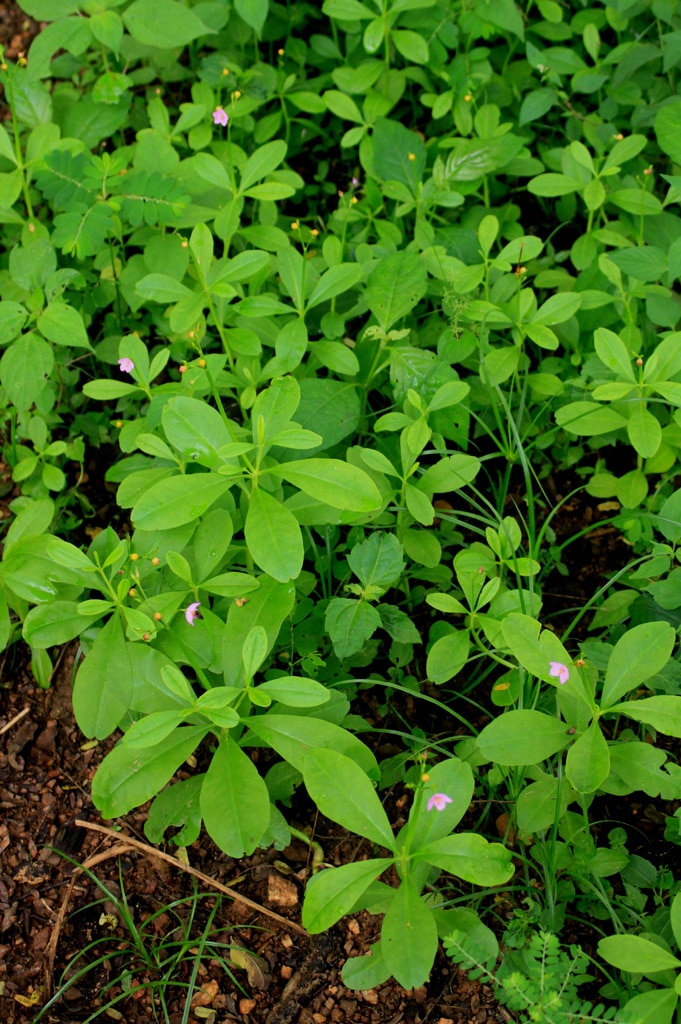
This perennial heat-tolerant green loves heat and humidity. In fact, its nickname is Florida spinach. Ceylon spinach is a small, clumping green that puts out pink flowers when it bolts. It’s so pretty that some people use Ceylon spinach as an edible border plant.
People with kidney problems, rheumatoid arthritis, or gout should watch how much Ceylon spinach they eat because it’s high in oxalic acid. For most people, though, this green is a healthy source of vitamin A, vitamin C, iron, and calcium.
Curly-Leafed Kale (Brassica oleracea var. sabellica)
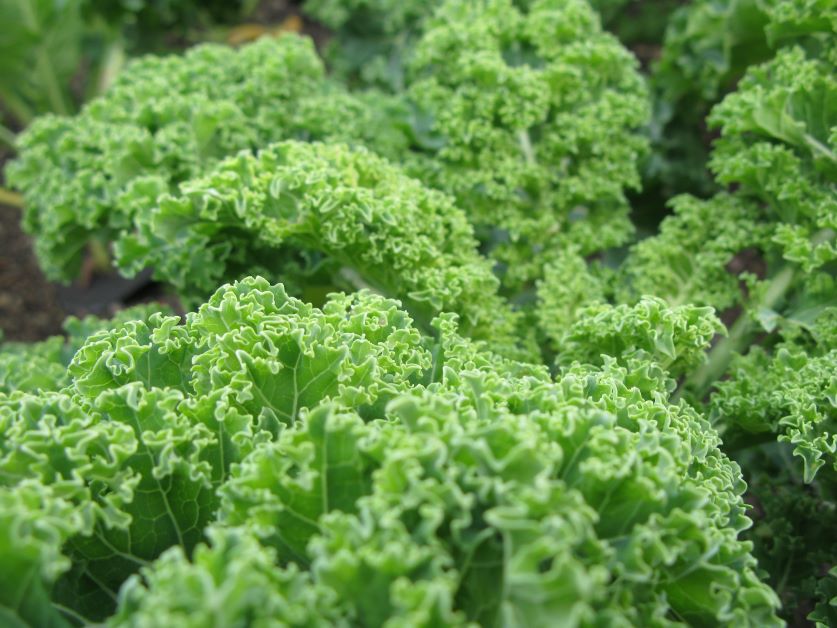
I included curly kale in this list because it doesn’t bolt too easily, and it does indeed grow well during fall, winter, and spring. It’s tasty and makes for a pretty plating element because of its decorative leaves.
There is one thing I don’t like about curly kale and that is the aphids that come with growing them. The nooks and crannies in the leaves provide excellent hidey holes for these annoying pests. If you grow curly kale, make sure to look it over regularly for signs of aphids.
If you do end up in the middle of a battle, you can learn how to get rid of aphids organically with my comprehensive aphid guide.
Arugula (Eruca vesicaria ssp. sativa)
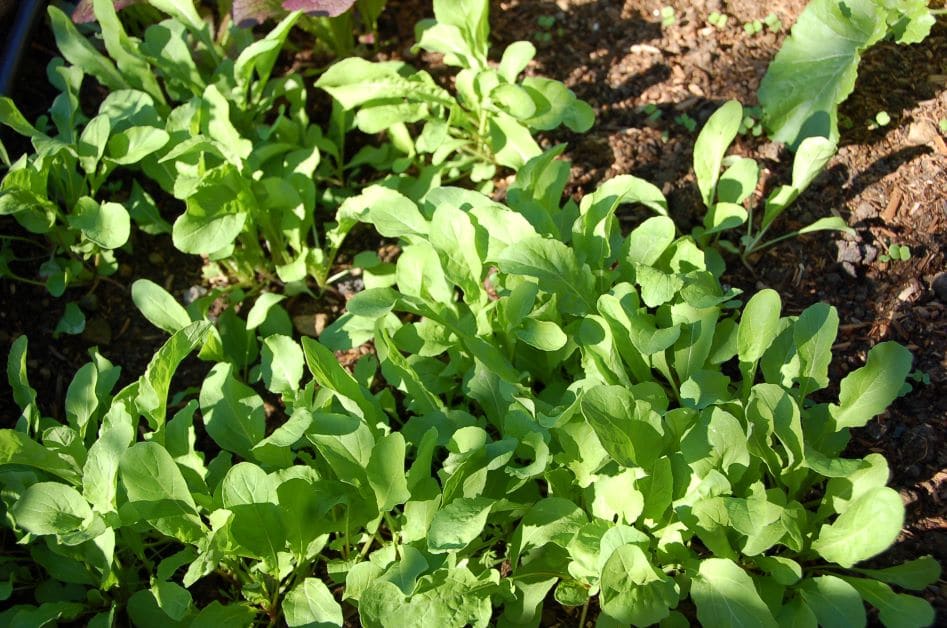
The British call this green “rocket,” which I think it a much cooler name than arugula. This green grows fast and has a spicy, mustardy taste. Compared to the other greens on this list it does bolt fastm but there are slow bolt varieties available. I don’t mind the bolting, though, because bees really love their flowers. I also haven’t noticed a huge difference in taste when arugula bolts. Bolting greens are bitter, but arugula’s spiciness dominates.
To lessen the chance of your arugula bolting, keep the soil moist. You can also grow them in partial shade if you’re growing it during summer or early fall when it’s especially warm.
Featured Image Photo Credit: Steph L.
Disclaimer. Offbeet-Gardener is reader-supported. At no additional cost to you, I earn commissions from purchases made through links in this post.

